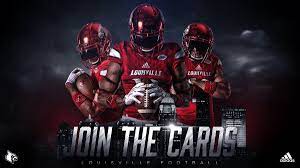Football jerseys are not merely clothing items; they Louisville College Football Jerseys represent the identity, pride, and history of a team. They have undergone a fascinating evolution, reflecting the sport’s transformation from its inception to the modern era. From the traditional designs to the technological advancements in fabric and aesthetics, football jerseys have significantly evolved, becoming an essential part of the game’s culture and commercial appeal.
Origins and Traditional Designs
The history of football jerseys dates back to the late 19th century when the sport began gaining popularity in various parts of the world. Initially, players wore simple, long-sleeved shirts without any distinct markings to differentiate between teams. As the game progressed and formal leagues were established, teams started adopting unique colors and patterns to distinguish themselves from opponents.
Stripes, hoops, and solid colors were among the early design choices, often influenced by the team’s city or region. These traditional designs not only served the purpose of identification but also created a sense of unity among players and fans alike. The iconic striped jerseys of teams like AC Milan or the distinctive hoops of Celtic FC are prime examples of how these early designs became synonymous with their respective clubs’ identities.
Rise of Branding and Sponsorship
The 1970s and 1980s marked a significant shift in football jersey aesthetics. The introduction of commercial sponsorship changed the landscape of football kits. Logos of various brands started appearing prominently on jerseys, leading to a fusion of team colors and corporate identities. This transition sparked debates among fans about the balance between tradition and commercialization.
